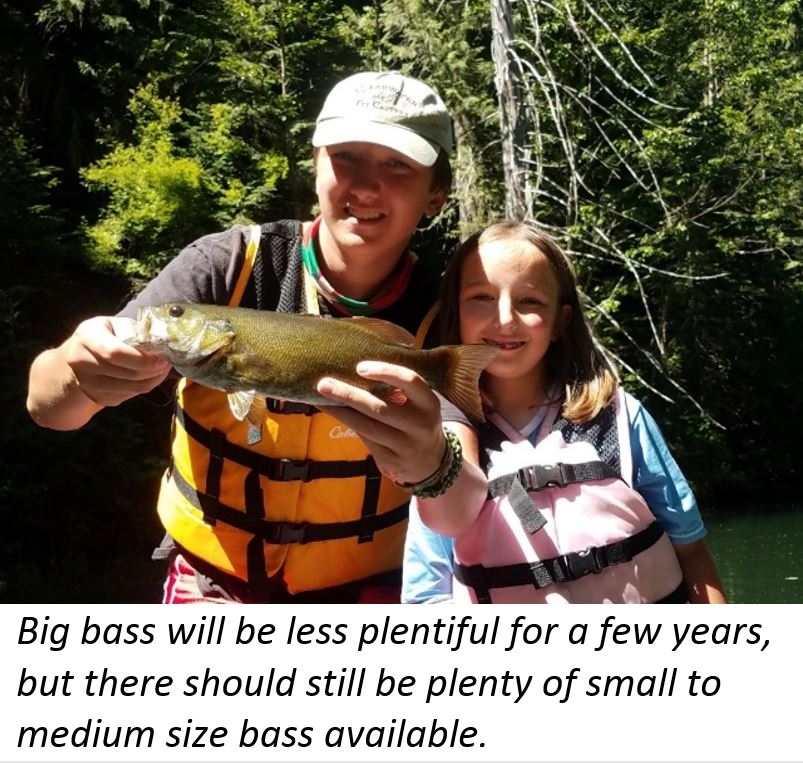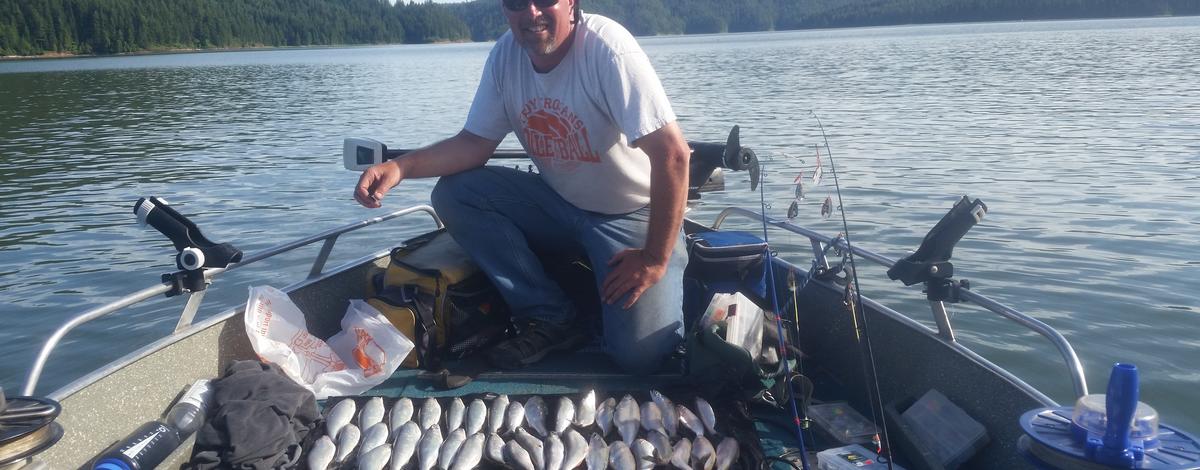Dworshak Reservoir Fishing Report
by Sean Wilson, IDFG fisheries research biologist
It seemed like winter would never end, but now that it has, we are facing the aftermath with raging dirty water in our rivers and streams. It may be weeks before some of our rivers become fishable. However, opportunity abounds in many of our surrounding lakes. With the forecast predicting temperatures in the upper 60s and lower 70s, now is a great time to pull out the boat, put new line on the reels, and get ready to go fishing. If Dworshak Reservoir is one of the lakes you like to fish, here’s what you can expect this year.
Kokanee
Kokanee numbers are constantly changing. We recently went from a record high of over a million adult fish in 2015, down to a mere 60,000 last year. But this year we should see numbers start to bounce back again. Last year there were more than half a million age 1 kokanee in the reservoir, which should translate to about a quarter million adult fish this year. This is about middle of the road for kokanee abundance in Dworshak.
Most kokanee fishermen know that high numbers mean smaller fish, and low numbers mean bigger fish. But the size adult fish reach is also dependent on how much they grew as age 1 fish and how many age 1 fish they have to compete with for food as adults. Taking these factors into consideration, I expect these fish will average about 11 inches by July, which is slightly above average.

Smallmouth Bass
Dworshak is known for big smallmouth and this fishery gained popularity in recent years due to incredible growth rates fueled by lots of small kokanee. However, kokanee numbers have been down the last two years and bass growth appears to have slowed in response. Many bass anglers had a tough time finding big fish last year. As kokanee numbers go back up, so should bass growth, followed by an increase in the number of big bass. However, this will likely take a couple years of high kokanee numbers. With that said, there are still big bass out there to catch, they will just be fewer and farther between for a few years. There should also be plenty of small to medium size fish to catch. If you go, concentrate near creek mouths early on. The bigger fish will move up shallow to spawn by the time the water is 50 degrees. As the water continues to warm, the larger fish will move back out into deeper water and smaller fish will move up along the banks. As this happens, catch rates will pick up, but average size will go down. Don’t hesitate to take home a limit of small fish. Growth of bass under 12 inches is slow. Removing some of these fish means more food to go around for the little ones that are left. The faster these fish can get to a size where they can feed on kokanee, the faster they will grow into trophies.


